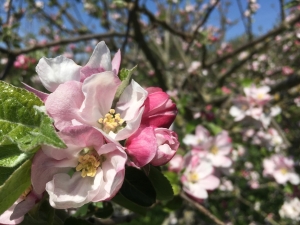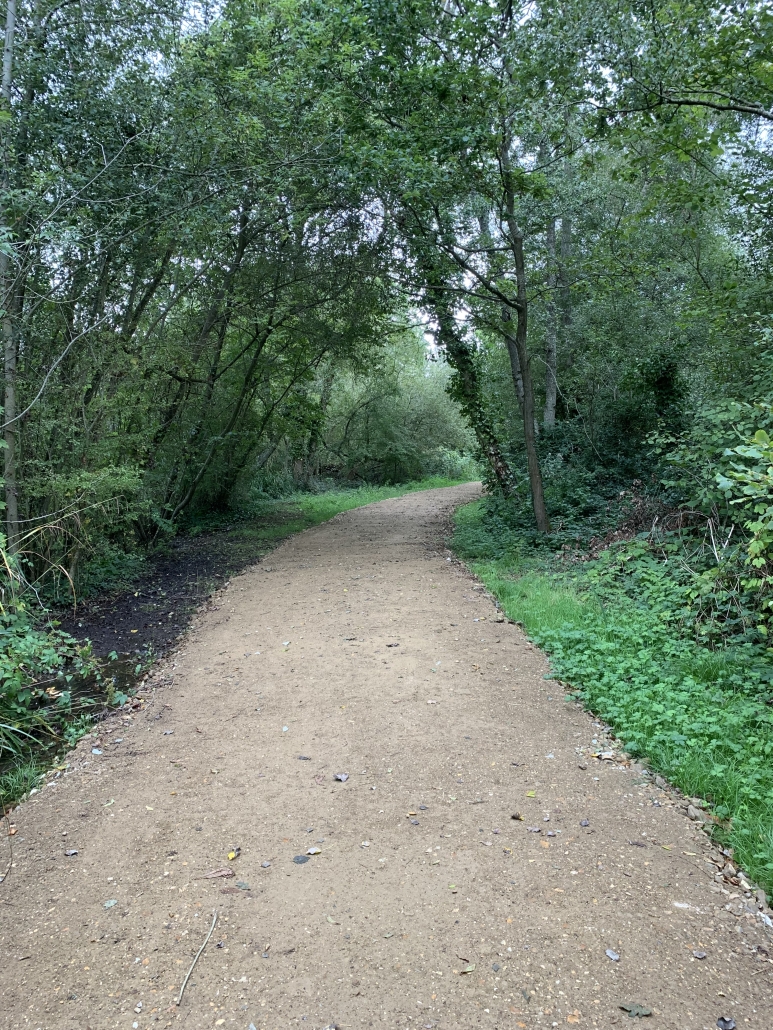For all of those that missed our planting and pruning event, here are some of our top apple tree pruning tips:
Aim for an open goblet shaped crown – begin the job with an end in mind.
Don’t leave little stubs. When you’re making cuts make sure they’re clean and flush to the larger branch they grow from. The exception is heading back cuts (see below).
Bear in mind that horizontal branches bear more fruit than vertical branches.
If your tree has been really neglected, don’t do all the work in one season. You could do more harm than good and cause rampant regrowth. Spread the work out over 2 or 3 winters.
Remove large branches by cutting them off in sections to avoid injuring yourself.
Dwarf trees don’t need too much pruning – just a light touch.
As ever, March was a busy month for us- the weather certainly didn’t help our cause. Some days were sunny whilst others were filled with snow, sleet and rain. In spite of the good old English weather, progress has been made across many of our sites, March’s highlights:
Brading Down
Working with J.R Fencing we installed two new kissing gates and an access gate for our vehicles on. One of the kissing gates is for disabled access from the ice cream van car park. This means there are now more points from which to access the lovely walks on the Down as well as the new picnic area which is adjacent to the ice cream van car park. Works to the car park surfaces will shortly be underway and there are now new information boards in place explaining the history, landscape and wildlife of the site. We have also been restoring benches in the area, getting them picnic ready. Finally we fitted new signage for the nature reserve and heard our first Skylark of the season, Yay.
Pig Leg Lane
We worked on our Allen Scythe (trusted piece of ranger machinery) mechanics to get it running well and took it out to cut some long grass and brambles beside one of the paths. The machine is great for cutting rough grassland and then we rake up the waste to prevent mulching over new growth beneath. This also stops nutrients returning to the soil which benefits wildflowers over vigorous grasses and nettles.
Bonchurch Landslip
Sadly an Ash Tree gave up the ghost and fell over a path in Bonchurch Landslip, we had to cut it into pieces to remove efficiently. Do drop us a line if you ever notice something similar at one of our sites. We do our best to get around as best we can, but it can be tricky to check on all 29 each week.
Pan Mill Meadows
Lots of tidying up around the path that runs down the side of the Matalan bridge and within eye shot of M&S. This is a well-used route and was overgrown with brambles and privet which during the summer grows out and has to be constantly cut. We had a good prune along there.
Hunnyhill School Presentation
We’ve been down to Hunnyhill School to chat to them about the life, history, behaviour and physical characteristics of our beloved red squirrels and why they are so important to the Island. The children were very enthusiastic and came up with some fantastic ideas of how to record and protect the squirrels.
We will be returning to the classroom for another visit and we will be taking the class on an adventurous walk to Parkhurst Forest to the red squirrel hide.


